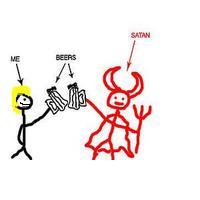I heard the neuroscientist V. S. Ramachandran on The Leonard Lopate Show talking about his new book, The Tell-Tale Brain. Which sounds like a must read. The subject of synesthesia came up, as did mirror neurons and phantom limbs and some other stuff.
Color blindness is a condition affecting the retina. They have done research on people who are color blind and have synesthesia and find they can provoke images of colors they have never seen by showing them numbers.
As I had written before, synesthesia originates because of unusual wiring in the fusiform gyrus region of the temporal lobe. The most common form is grapheme-color synesthesia, the kind where numbers and letters get associated with colors. The fusiform gyrus is also associated with determining shapes so this makes sense. A friend of mine has this form of synesthesia, although he says he didn't realize until he got married that this wasn't the way everyone saw numbers.
Although only about 1 in 50 people exhibit this trait, about 1 in 8 artists and novelists have it. It brings up interesting ideas about how art evolved so early in our species (when leisure time wasn't plentiful.)
They also still don't know how exactly a clump of neurons became the human brain and all that that entails. Ramachandran said it's a mystery (the kind that makes scientists giddy.) He also talked about Chomsky's theories of the brain, which I only know in relation to language. That is, Chomsky believes the brain is born innately wired for language (the way pidgin evolves into creole is cited as one proof of this.) I guess I need to read to book to see what he was talking about but he did say that perhaps when a billion neurons are compressed into a small space, unpredictable things-like making a brain-will happen. That's a cool idea.

No comments:
Post a Comment